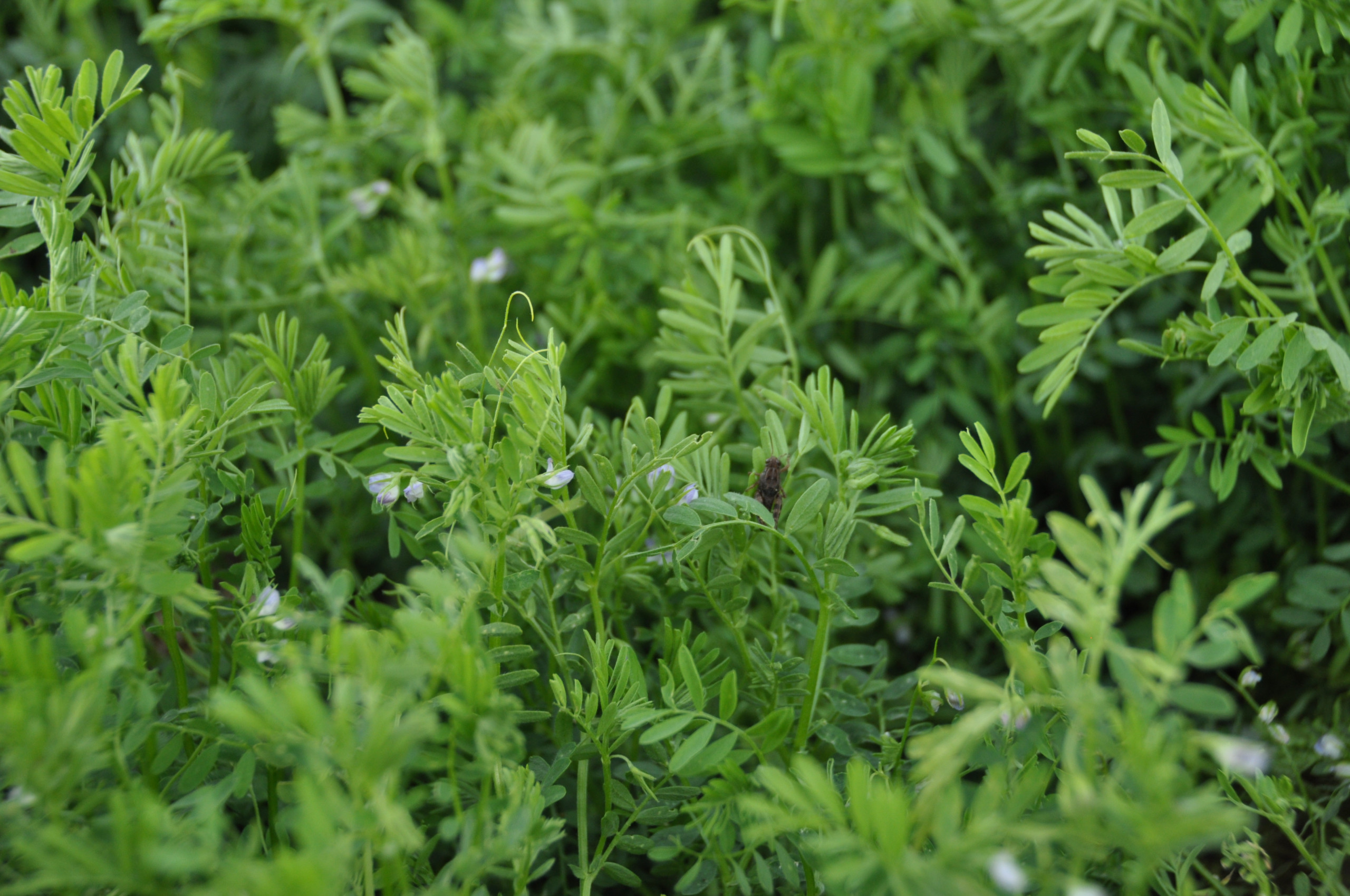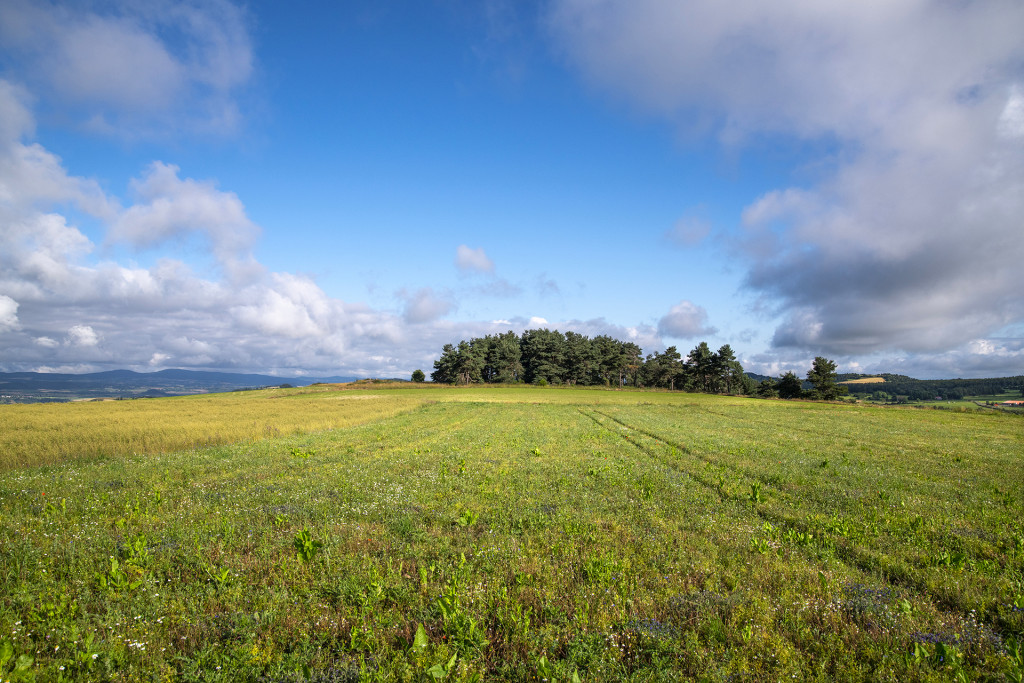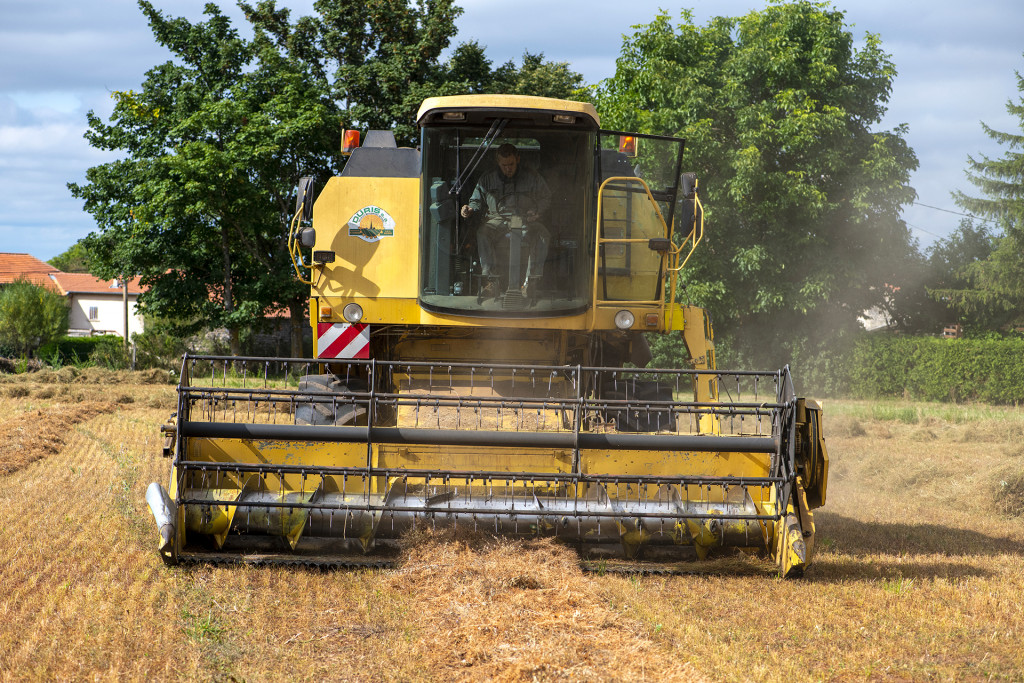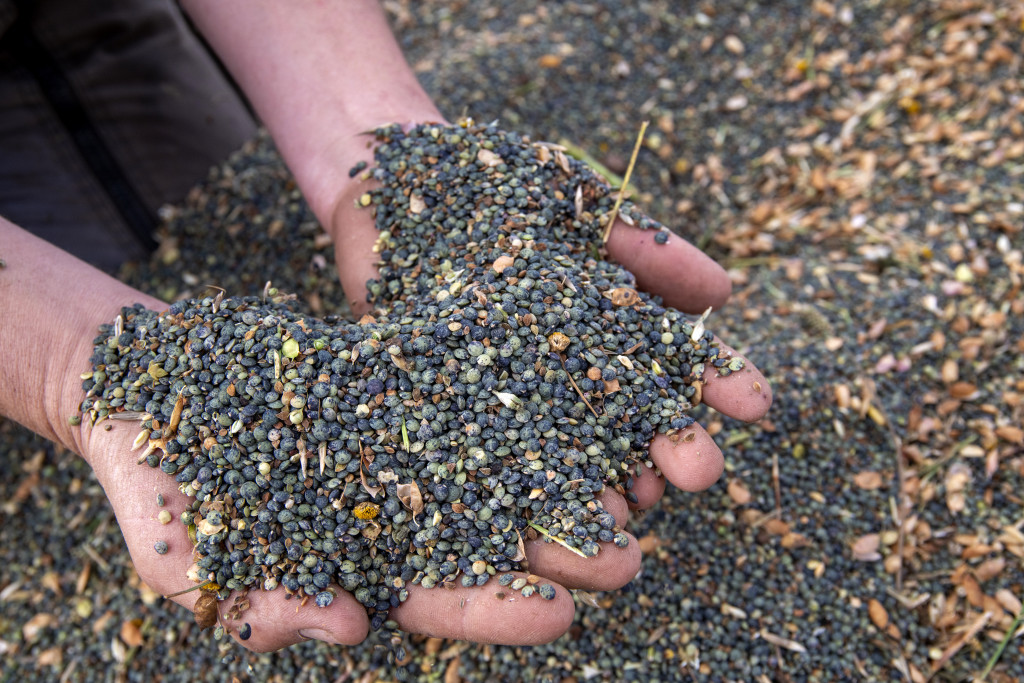ITS CULTURE AND LAND
ITS CULTURE

The lentil is a plant species belonging to the legume family. In the Haute-Loire, the Lens Esculenta Puyensis variety is grown, named by the Russian botanist Helena Barulinda in reference to the town of Le Puy-en-Velay, which has long been known for its lentil cultivation.
At the end of a selection process, INRA has retained a particularly deserving line, named ANICIA after the ancient Roman city of Le Puy.
The lentil is an annual plant between 20 and 30 cm high. Its fruits are pods, usually containing two seeds. The characteristic color of the Green PUY Lentil PDO is pale green with bluish marbling.
This green color is mottled with blue due to the presence of anthocyanins – the same pigments found in blueberries or black grapes for example.

The cultivation of lentils
Lentil is a spring crop that prefers well-draining soils characteristic of the volcanic soil in our area. The cultural calendar is established with the know-how of the producers who adapt themselves according to the climatic conditions of the year, but in a general way, this calendar is organized like that:
- From November to February: ploughing of the plots
- From March to April-May : sowing
- From mid-July to September: harvest
All these steps are carried out with classic agricultural equipment (plough, harrow, seed drill…)
The sector applies the principle of sustainable agriculture throughout the crop cycle.
Thus, a program of technical experiments and a network of observation plots are set up each year in order to fight against bio-aggressors of the crop while paying the greatest attention to the respect of the environment.
Lentil is a crop with low mineral requirements. Volcanic soils are rich enough to feed the plant properly. Moreover, lentil is a legume and thanks to its nodules, it has the ability to capture nitrogen from the air and transform it into mineral nitrogen.
Due to its small size, lentils are sensitive to climatic hazards which directly impact yield.
HIS LAND
The terroir is the key element in obtaining the Green PUY Lentil PDO. Thus the appellation area is limited to 87 communes in the Haute-Loire region, mainly covering two large natural areas: the volcanic Velay and the Puy basin. The Green PUY Lentil is grown, collected, sorted and packaged exclusively in this area, which allows for total traceability from field to plate.
This appellation area is located in a mountainous zone at an altitude of between 600 and 1,200 m. The soils are predominantly volcanic which is quite rare in the world. In addition, this area has a specific climate called the Foehn effect, which dries out the lentil before it is fully ripe, giving our lentil its taste characteristics (thin skin and non-starchy kernel). Thus, seeds of the same variety, cultivated elsewhere in France or in the world, do not offer a product of such quality: this is proof of the importance of the terroir of origin of our lentil.

During the summer period, the atmospheric flows come up against various mountainous barriers as they advance inland, such as the Cantal and Margeride mountains to the southwest of the lentil-growing area, or the Monts du Vivarais to the southeast. The disturbances then rise in altitude, and the humidity condenses. Then, these disturbances go back down to the heart of the appellation area, rid of their moisture. Only a dry wind sweeps around Le Puy-en-Velay: it is the foehn effect.
This summer drought results in high water stress, preventing the lentils from reaching maturity. This is why the Green PUY Lentil has a thinner tegument (the skin surrounding the seed), which is more permeable during cooking. Moreover, its chemical composition changes, our lentil is less rich in starch and therefore not floury.
The Velay, a particular climate
For the same altitude: it rains less, it is warmer in the PDO area

This influence of the climate is completed by a geological aspect, the soils of the appellation area being favorable to the development of the root system, and their hydric property is particularly adapted to this culture.
All these reasons, closely linked to the geography of the area, give the Green PUY Lentil its gastronomic aptitudes: quick cooking, non floury kernel, delicate taste.
The terroir is essential for the Green PUY Lentil PDO, but we must not forget the knowledge of the men and women who for many decades have been doing everything possible to cultivate the lentil and have a perfect product for the consumer.
Terroir and know-how are the key elements of the Green PUY Lentil PDO.




